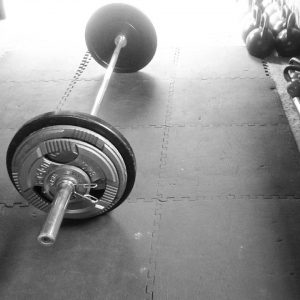When I’m running, sometimes my head switches into screensaver… amongst the blank spaces, a lot of my time is spent thinking about how to get faster, why the fast guys are indeed so fast and what are the limiting factors preventing me from getting faster and how to overcome them.
There are a number of factors that come together in terms of being fast and efficient. Perhaps the overarching principle is the same as that of Ski Touring and Ski Mountaineering- Power to Weight ratio. If you are Light, brilliant. You are easier to propel uphill. However, if you lack Strength, you won’t be able to propel yourself at the same speed as someone who is Light and Strong.
However, if you are Light and Strong, but lack the ability to transfer that strength quickly – i.e. you lack Power then you won’t be as fast as a Light, strong, Powerful athlete. And if you have all of those, but run out of steam a couple of miles down the track, evidently you lack Endurance.
That’s quite a combination.
So, Strong, Powerful, Light. With Endurance.
Is it even possible to have all of these things together? It must be if you look at the likes of Sam Tosh and Simon Bailey… though is it possible to attain them?
To be honest, I’m not entirely sure – the whole nature versus nurture thing comes into this debate. However, training each of these qualities individually should help a fairly average runner, such as myself, become a bit better. Indeed, a lot better than just focusing on a single aspect.
To begin with I’m going to think about Strength from a “Power to weight” ratio point of view.
When you step upwards, onto a step, or up a hill, you use muscle power. Imagine for a moment that you can step up once before you completely exhaust your muscles. (bear with me here)
You can now do a single repetition before you are done. Not very Strong, certainly not very efficient.
Now, imagine that you can do a single repetition with your body and another 25% more weight. Brilliant.
Take that weight away and you can now probably step up for a greater number of steps at an increased speed simply because you are working at a capacity lower than the level you have trained at.
Now… imagine if you could do that step up with 50%, 75% or even 100% of your bodyweight. Now when you take the weight off and you are at bodyweight, each step feels easy every time you do it. Your capacity has increased far above that of the person that can do a single step at bodyweight before having to stop.
In this case, the stronger you are, the easier the uphill running becomes.
But its not quite that simple…. Now the power to weight ratio comes into it… If you have a 65kg runner who can step up with 120kg on their back, and a 100kg person who can step up with 240kg… who is going to be the better runner?
I’d put my money on the lighter runner even though he doesn’t quite have the ability to do it with twice his bodyweight…. So there is a limit to heaviness and weight lifting ability.
Note that I’m talking about getting stronger, but not physically heavier. A lot of people equate strength to building muscles, and this, to a point is true. You can, however, gain strength without gaining massive amounts of muscle, which is exactly what a fell or endurance runner needs. There really isn’t enough space to go into it now, but if you’re interested, drop me a line. If there are enough people going “what the hell? Explain!” then I’ll write a separate blog about it.
So.
Strength is important, but not to the detriment of getting heavier. Power to weight ratio is king.
Next time I’ll write about Power… the ability to lift heavy stuff fast, and the subsequent ability to transfer energy fast.
Specific single leg exercises for leg strength –
- Single leg sit to stand from a chair.
- Bulgarian split squats.
If you have any questions / arguments you want to pick / suggestions for me / and so on and so forth, please drop me (Tim) a line on contact@globaltherapies.com




